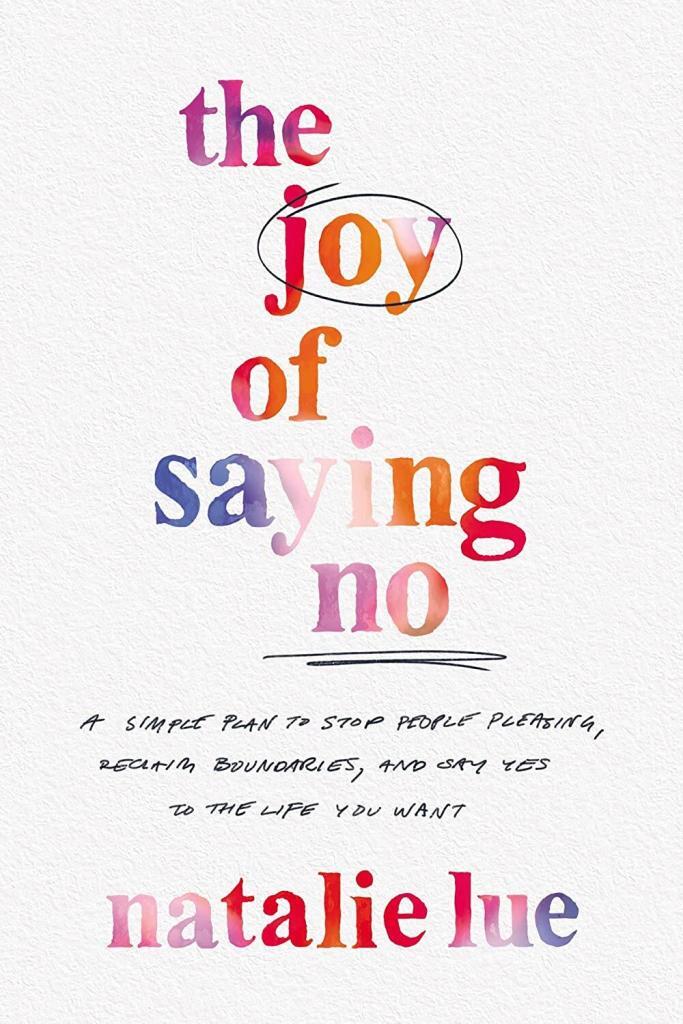After sharing on my podcast that I went to therapy for the first time at age forty-three, I received so many lovely messages. Plenty featured requests for tips for finding a therapist and how to have healthy boundaries during the process.
There are undoubtedly wonderful therapists out there. A common theme, though, in the questions and stories I receive about therapy is boundary issues. Invariably, these exacerbated what the client had sought support for or even put them off therapy.
Here’s the craic: A therapist (or coach, for that matter) who overrides your boundaries, including taking on a parental role, emotionally blackmailing, belittling or gaslighting you, fostering a codependent dynamic, or encouraging you to engage with sociopaths or the narcissistically inclined, is about as much use to you as a chocolate teapot. And yes, these are just a sample of real experiences that clients, readers and listeners have shared with me.
While part of the reason you’re investing in therapy is to learn how to create healthy (or healthier) boundaries—all of our problems and challenges represent some form of boundary issue—you also need to have appropriate boundaries for therapy from the get-go. This is crucial in recognising whether the relationship between you and your therapist is healthy. And so here are 7 tips to help you find the right therapist for you—with your boundaries in tow.
1. Do you need a specific type of therapy?
Sure, you could go broad and just reach out to the first therapist you come across or your local one. That might turn out alright. But discernment leads to a better, focused, fulfilling experience. It’s easy to assume, especially if, like me, you grew up in the eighties and nineties watching homogeneous depictions of therapy, that it involves lying on a couch and talking until your time is up.
Do your homework. Become familiar with the many different types of therapy to meet your emotional, mental, physical and spiritual needs. For example, counselling, Cognitive Behavioural Therapy (CBT), art therapy, Eye Movement Desensitisation and Reprocessing (EMDR), Family Systems. Depending on where you live or whether you’re paying, you might need to check what’s covered on your insurance or potential waiting times (if it’s free). Or you might need to consider budget or whether they offer a sliding scale.
While you may already be aware of what you’re looking for from therapy (the process or help with a result), it might take a few conversations or sessions with different therapists to discern this. This is okay.
Side note: the therapy examples given are just that, not endorsements or expressions of my personal preferences.
2. Do you have specific needs or preferences that will help to make the therapy experience more comfortable?
For example, if you have a preference for working with someone of the same sex or you’d like to work with someone from the same background, etc., factor this into your search. Do you want someone who will give you homework or suggest next steps? Or do you want a therapist that mainly listens?
You also need to be honest with yourself about whether you have specific needs requiring a therapist that specialises in that subject or treating a particular issue. It might be that you need a therapist who’s maybe more cognizant of the specifics of your background or culture. Let’s say you’re seeking therapy due to being sexually or racially harassed or assaulted. If the therapist then tends to try to rationalise the perpetrator’s behaviour or downplay the existence of the issue, this is retraumatising. And yes, those were more very real examples!
Many therapists list their areas of specialism on their websites, and plenty also post on social. No, you don’t need to turn into Columbo. It’s worth a quick look, though, if they have a profile for their practice.
It’s also worth considering whether you prefer in-person or doing it over a video call.
Not sure what you need? That’s okay. Go ahead with therapy anyway. It might be that you quite simply need someone impartial to talk to who will give you the space to get a sense of what you’re thinking and feeling. Or, it might be that engaging in the process gives you clarity about your needs and preferences.
3. Use the initial session(s) to get a sense of fit.
If they offer a free or discounted initial consultation or discovery session, avail of this. Keep in mind that this is an opportunity to gauge whether they have experience of the issues you want to address or whether they work in the way you want. Don’t treat it like a free therapy session where you try to pump them for as much info as possible or expect them to fix your life. The same goes for emailing or DMing the therapist requesting feedback/insight on an issue.
It helps if you’ve made some notes beforehand summarising why you’re seeking support, along with any specific requirements or questions. It’s more than OK to ask if they have specific experience of, for example, dealing with people from X background or with Y experiences/challenges. Their answer might reveal whether you’re a good fit. Ask them how they work instead of assuming. For instance, some therapists work with you for a set number of sessions rather than being open-ended.
You will also need to understand the boundaries around, for instance, cancelling or rescheduling a session. Depending on how they work, there might be guidelines around communicating out of hours.
Discomfort due to a boundary issue might become apparent in the first session, but it might take longer. Just as with dating, it’s possible to get off to a great start with therapy and for you to then experience or become aware of something that changes that. Don’t ignore this and plough ahead. Similarly, it might take more than one session to warm up to each other.
4. Check in with you about your expectations.
If you want someone to tell you what to do but you’ve signed up for a form of therapy where they do a lot of listening, you’ll feel frustrated when the therapist doesn’t give you the direction you’re expecting. It’s also, however, crucial to acknowledge that it’s not a therapist’s job to ‘tell you what to do’. You might be ceding your responsibility and power, and, yes, potentially trying to put your therapist into a parental role.
Don’t go in with the aim of ‘solving your life’ in one or a few sessions. You’re doing yourself a disservice by not giving yourself space to address something or expecting a therapist to sort your life out based on the equivalent of a brief conversation. It’s also best not to clock-watch your progress. If, for instance, you’re doing six sessions, freaking out about your progress after two sessions creates a lot of pressure. Let’s say you’re in couples counselling. In that instance, you need to let the process do its work rather than get frustrated that your partner isn’t where you’re at two sessions in.
If you have a goal in mind for the sessions, communicate this early on rather than assuming. This way, the therapist can clarify whether this is possible or break down their process and work with you to set a goal.
Side note: If the therapist or coach works in a number of modalities and you went to them for a specific one, communicate this upfront to ensure you’re getting what you paid for. Some do get carried away and want to do the therapy they feel ‘called’ to do, which can leave you feeling confused or railroaded. This might mean checking in that you’re still on the same page if you feel they’ve gone off-piste.
5. Notice whether you are falling into familiar patterns and playing a role with your therapist.
Pay attention to the pattern of your dealings with your therapist, especially if it’s similar to other unhealthy relationships and situations. If you don’t catch yourself in your patterns, if and when they annoy or disappoint you, it will be very triggering.
For instance, don’t treat your therapist like a parental replacement or one of your homies. Or, like someone whose life you want to steal. Boundaries! Be mindful of where you put your therapist on a pedestal or find yourself reverting to a child role. This is a code red alert that it’s not a boundaried dynamic. Playing roles means you’re people pleasing, which will defeat the purpose of going to therapy! Let therapy sessions be one of the places where you put yourself first and give your inner pleaser a nap.
If you’re someone who struggles to discern their boundaries and what they need or want, or who sometimes projects your thoughts and feelings onto others and then calls them theirs, therapy will shine a spotlight on this. The combination of a change in context (therapy) and working with someone who’s holding space for you to safely explore issues and challenges will offer an opportunity to deal with these.
Great and even good therapists are trauma trained and trauma-sensitive. They’re also skilled at steering conversations and the therapy situation to more boundaried territory. They won’t, unless it’s like The Shrink Next Door(!!!), want to capitalise on your seeming adoration of them (or your anxiety and insecurity).
Now, of course, trauma is personal and relative to one’s personal experience. A trauma-informed therapist, however, is mindful of language, behaviour and attitudes that trigger and will seek to address and rectify should an issue arise.
6. Commit to therapy for a little longer than you’re comfortable with.
When I embarked on therapy sessions at age forty-three, one session in and a load of stuff clicked into place. Continuing, though, for another 8-9 sessions even though it didn’t seem like I ‘needed’ it was incredibly useful and kept me honest. It’s tempting after one or two sessions to be like ‘I feel grand now, so there’s no need to do the remaining sessions’. Or you might feel buoyant because you’ve met someone new. Suddenly, the idea of talking about your breakup with your ex or confronting baggage around family seems too real and cuts through your happy glow. It’s also possible that in the way that life is, life (work, feckin Covid, something) might get in the way.
After the initial session(s) where you’ve established who you’re going to work with, commit.
Make a deal with yourself that you’ll do a certain number of therapy sessions. And make it more than the initial number you had in mind.
This is especially so if you have a level of scepticism or shame around therapy, “mental health”, or talking about your feelings or experiences. In my Irish-Jamaican-Chinese-English upbringing, therapy was “chatting out your business”, being a “naval gazer”, or trying to make people think you belonged in “the madhouse/John of Gods”. Same if you tend to pride yourself on being strong, having it together, or knowing everything. Therapy doesn’t mean you’re “weak”; you can’t (and don’t need to) do it all yourself. And thinking you know everything is an invitation to go to therapy.
It’s tricky to be prescriptive about how many sessions. It’s all relative. It depends on what you’re addressing and the type of therapy (some therapies will require a minimum number of sessions). If it’s talk therapy, 3-6 sessions will give a sense of overall fit in terms of working together medium to long-term. It’s also about being patient with yourself.
If you decide in advance that you’re going to do, for example, six weekly/fortnightly sessions with the therapist you identified, stick to it. This is better than being in a debate with yourself each week about whether you’re going to go to therapy. So many people make the mistake of slotting in therapy (and self-care in general) as and when work or other people’s priorities permit. And that’s why they don’t have time for therapy and keep bailing on their sessions.
When there’s that temptation to cancel/reschedule, pause. Sit alongside yourself and notice what’s coming up without judging you. What are you feeling? Are you avoiding something? Is something bothering you?
Remember, therapy is for and about you. The therapist will be okay if you can’t make it (unless you’ve broken a financial agreement). So if you bail on your session, you’re bailing on yourself. Similarly, when you commit to therapy sessions, what you’re really committing to is you.
Remember that these are your therapy sessions.
7. Recognise when you’ve outgrown the therapy relationship.
Sometimes therapy comes to its natural end because you finish up with the set number of sessions. Or maybe it’s that the therapist points out that you’re ready to wrap up. Maybe you’ve achieved your aims and got what you needed out of the therapy sessions. And you will know if therapy hit your objectives because of anticipated and unexpected progress. Perhaps you feel equipped to try to put what you’ve learned into practice on your own. Or maybe your needs have changed and you want to explore a different therapist or therapy. These are signs you’ve outgrown the therapy relationship.
It could also be, though, that you realise that you’re running out of things to talk about. There might be little sense of connection between you and the therapist. It could be that you’ve given it your all and done your best to be boundaried, but can’t shake a niggling feeling about the sessions and need to trust yourself. You might almost have this sense that the therapist is getting more from the sessions than you.
I’ve also heard from so many people who continue therapy because they don’t know how to tell the therapist that they want to stop. Some people feel guilty about how ending therapy might affect the therapist’s finances. It’s not too dissimilar to avoiding breaking up out of fear of hurting feelings. All of these examples are signs you’ve outgrown the therapy relationship.
When you need to end therapy, do so with boundaries. So, you don’t need to get into a conflict or write a letter of resignation. It might simply come down to cancelling your next scheduled session and not rebooking another. Or, it could be that you thank them at the end of the session and say that this will be your last one. Keep it light; don’t turn your reasons for ending therapy into another therapy session. And, of course, if you feel called to, send a thank you note or letter.
Good luck!
Are you ready to stop silencing and hiding yourself in an attempt to ‘please’ or protect yourself from others? My book, The Joy of Saying No: A Simple Plan to Stop People Pleasing, Reclaim Boundaries, and Say Yes to the Life You Want (Harper Horizon), is out now.


 Add to favorites
Add to favorites 
